Colloidal AFM Probes by sQube

Nanometer sharp AFM tips are generally preferred for topographic AFM because they allow high lateral resolution measurements. However, many materials research and biological investigations require larger contact surfaces, well-defined AFM tip shapes and specific chemical properties.
An AFM probe with a spherical AFM tip in the low micrometer range distributes the pressing force over a larger contact area, enabling a wide range of force spectroscopy measurements for extracting a sample’s mechanical properties. It also enables non-destructive testing of delicate samples. The wider selection of sphere materials and dimensions covers the requirements of different physical, chemical or biological considerations in nanomechanical AFM experiments.
Force spectroscopy can reveal data about viscoelastic properties of materials, as well as adhesion. When the appropriate cantilever and bead are selected, AFM indentation can offer a very sensitive means to analyze the mechanics of a sample at the micro and nanoscale. Generally, to ensure the optimal probe is selected, prior knowledge of the sample mechanical properties (i.e. through references, previous macroscale measurements or well-founded assumptions) can inform the initial selection. In practice, this would mean that the ratio of indenter radius, R, to indentation depth, d, should not exceed 10.
Typically, in the absence of strong adhesion to the sample, analysis is done via the Hertz contact model. For a spherical indenter, the following equations can be derived, relating R, applied force F and indentation, d:

In this model E* is known as the apparent elastic modulus, which takes into account the mechanical properties given by E, elastic modulus and v, Poisson’s ratio (which can be assumed to be ½ for incompressible materials):

The colloidal AFM probes we offer combine well-defined microspheres with narrow size distribution and made of different materials with the well-known features of proven silicon, silicon nitride and quartz-like AFM cantilevers like high application versatility and compatibility with most commercial SPMs.
Microspheres made of different materials and with different diameters can be selected for specific chemical, physical or biological requirements. The microspheres we offer have evolved over the years based on the most common requests by researchers. Currently, sQube® offer silica, BSG, gold, polystyrene and plexiglass microspheres as standard with diameters in the 2-20µm range. sQube® welcome inquiries on gluing custom microspheres.
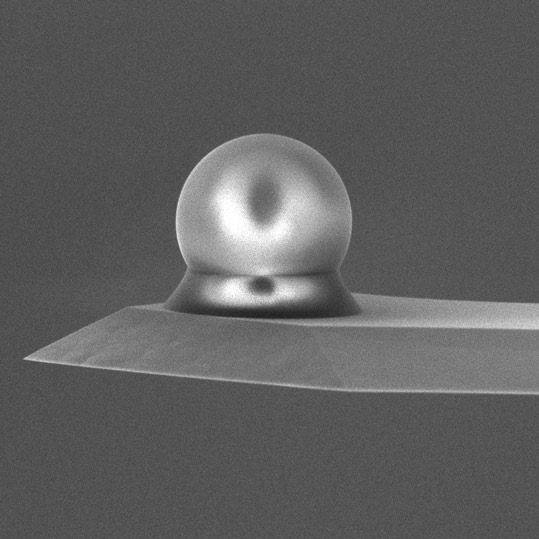
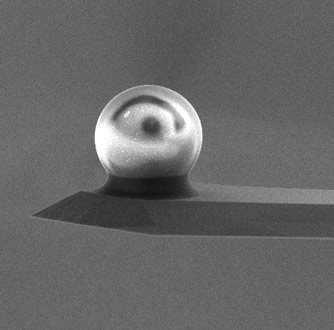
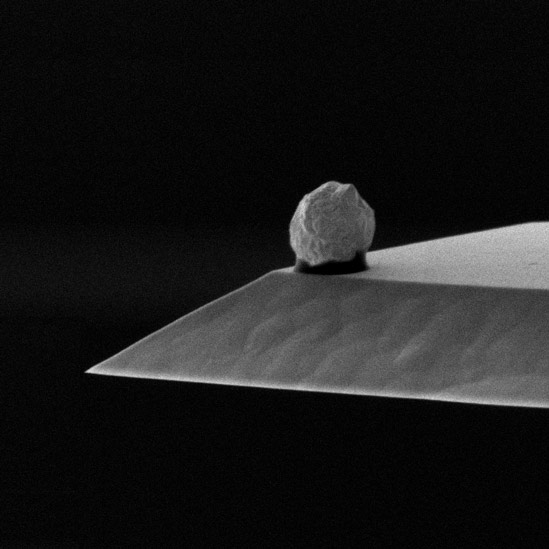
NB: Please note that state-of-the-art synthesis of gold microparticles does not guarantee ideal surface smoothness and ideal spherical shape. Some nanoroughness and small shape deviations are an inevitable result of the synthesis process.
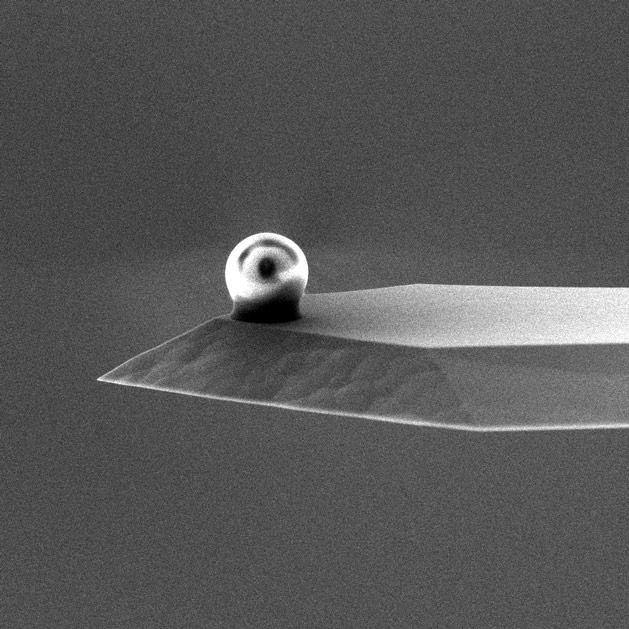
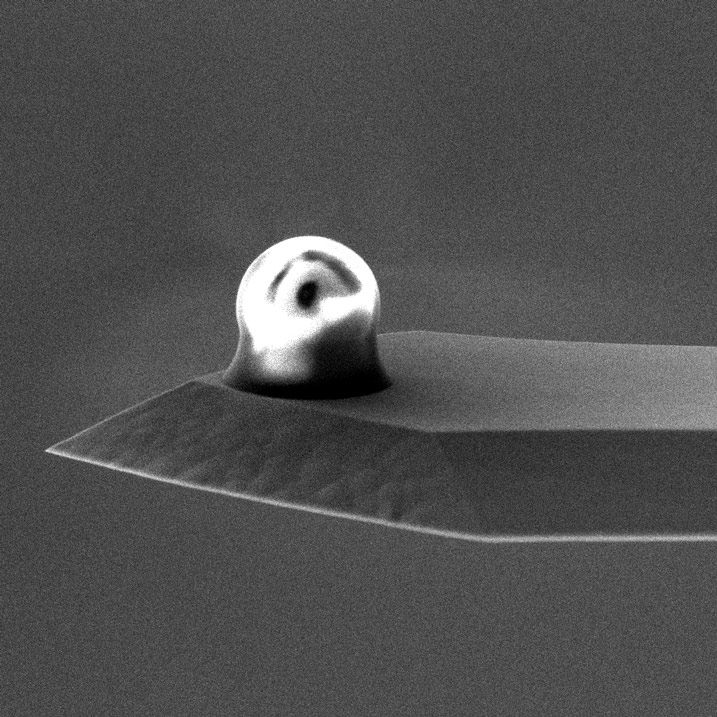
None of the microspheres have been functionalized or have undergone surface treatments.
Users interested in smaller spheres than the ones offered by sQube, should consider the smaller sphere tips in the 0.02 - 2µm range made of electron-beam deposited (EBD) high-density carbon / diamond-like carbon.
Colloidal probes with AFM cantilevers made of silicon, silicon nitride or a quartz-like material are available with force constants in the range 0.01-42N/m and lengths in the range 100-450µm.
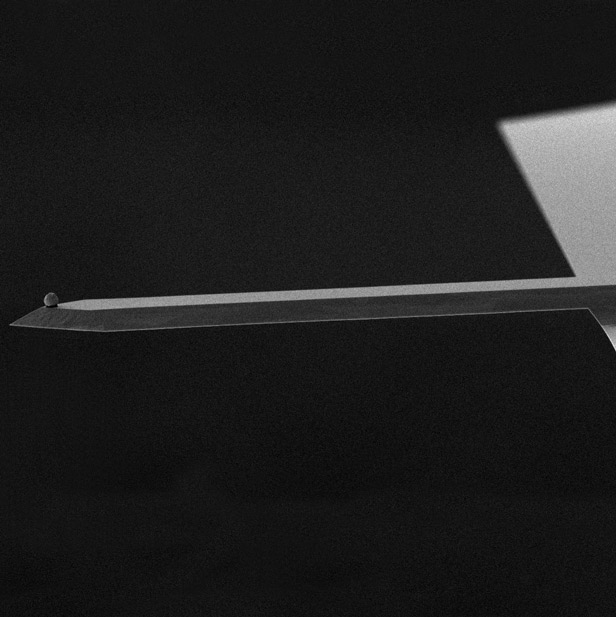
The NANOSENSORS™ TL-NCH tipless AFM cantilevers are made of silicon and have a rectangular shape. The nominal force constant is 42 N/m and the nominal length - 125µm. They are highly doped to dissipate static charge and chemically inert to most common solvents. Both the detector side and the sample-facing side of the AFM cantilevers are uncoated.
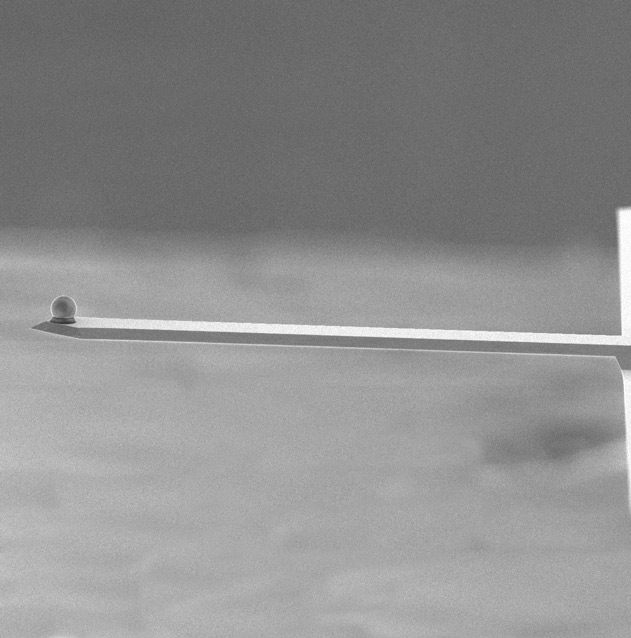
The NANOSENSORS™ TL-FM tipless AFM cantilevers are made of silicon and have a rectangular shape. The nominal force constant is 2.8 N/m and the nominal length - 225µm. They are highly doped to dissipate static charge and chemically inert to most common solvents. Both the detector side and the sample-facing side of the AFM cantilevers are uncoated.
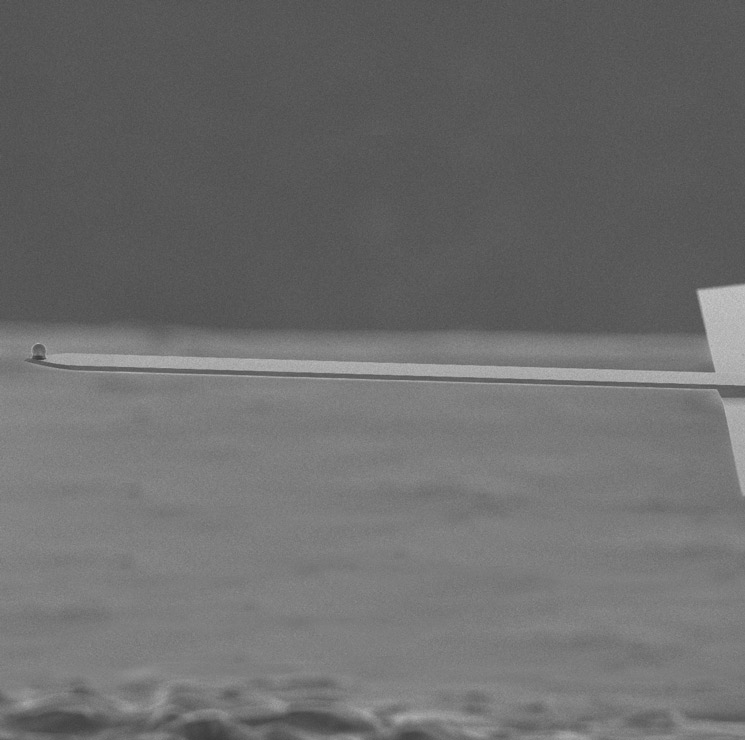
The NANOSENSORS™ TL-CONT tipless AFM cantilevers are made of silicon and have a rectangular shape. The nominal force constant is 0.2 N/m and the nominal length - 450µm. They are highly doped to dissipate static charge and chemically inert to most common solvents. Both the detector side and the sample-facing side of the AFM cantilevers are uncoated.
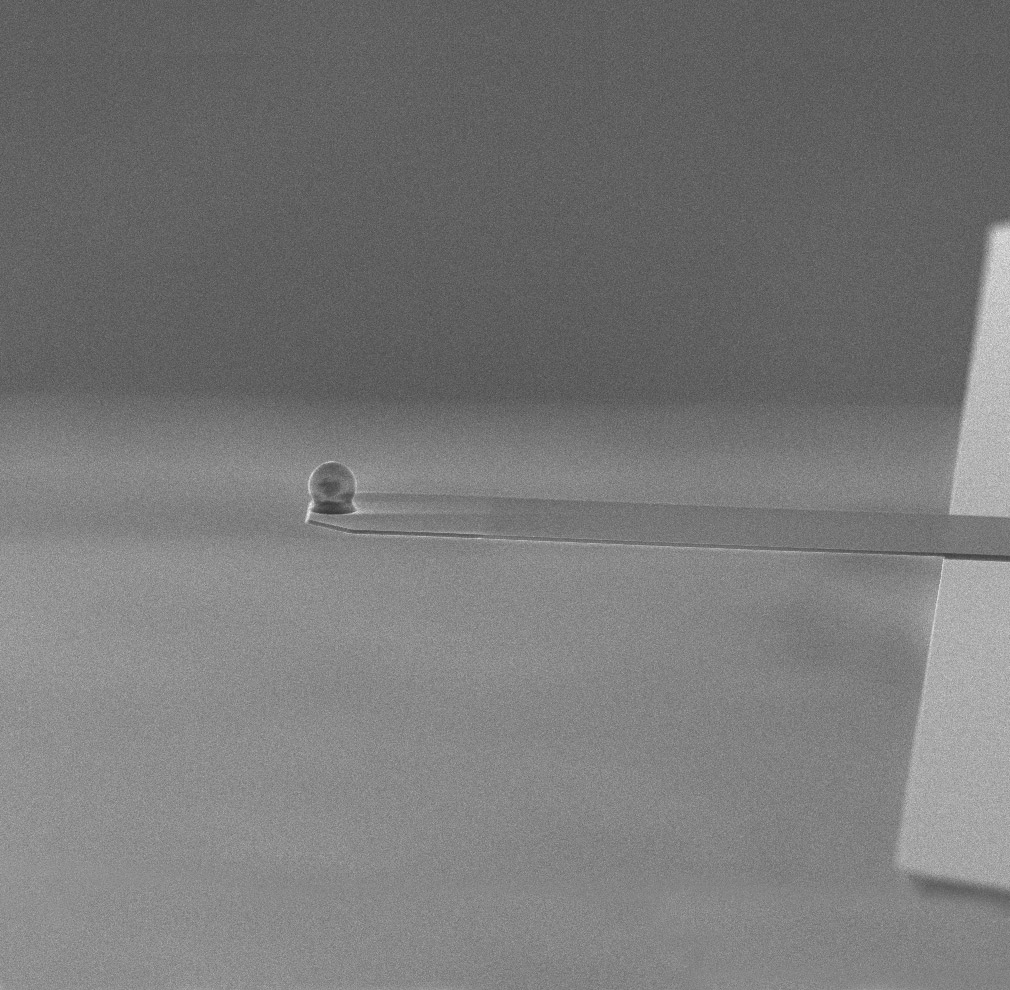
The NANOSENSORS™ SD-qp-CONT-TL tipless AFM cantilevers are a product from the NANOSENSORS™ Special Developments List. They are made of a quartz-like material and have a rectangular shape. The nominal force constant is 0.1 N/m and the nominal length - 125µm. A partial, reflective gold coating is deposited on the free end of the detector side of the AFM cantilever. The main advantages of the coating are low bending and reduced drift, particularly for measurements in liquid environments.
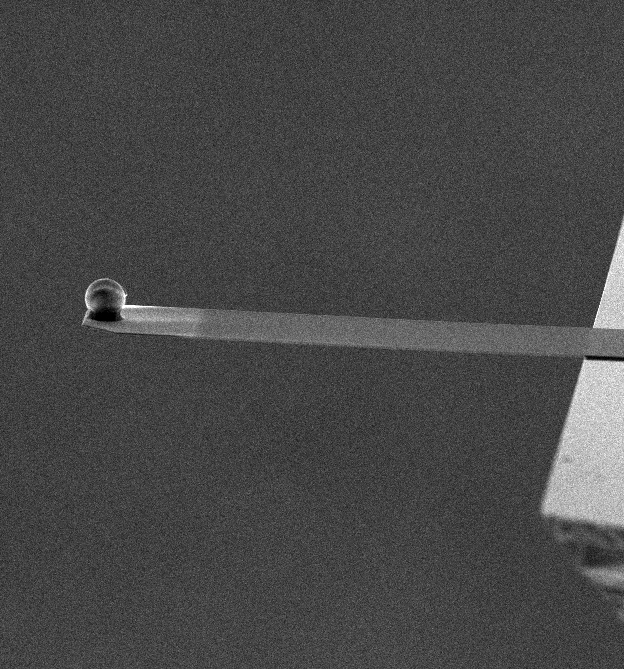
The NANOSENSORS™ SD-qp-SCONT-TL tipless AFM cantilevers are a product from the NANOSENSORS™ Special Developments List. They are made of a quartz-like material and have a rectangular shape. The nominal force constant is 0.01 N/m and the nominal length - 125µm. A partial, reflective gold coating is deposited on the free end of the detector side of the AFM cantilever. The main advantages of the coating are low bending and reduced drift, particularly for measurements in liquid environments.
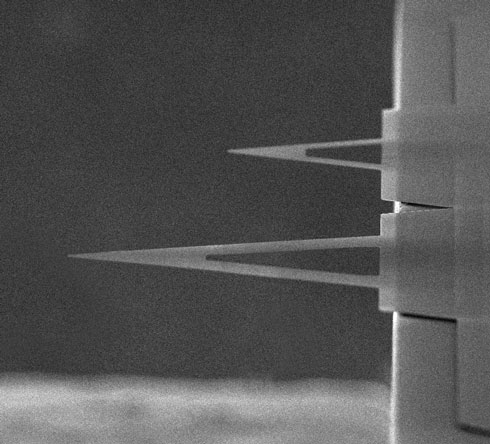
The NanoWorld® PNP-TR-TL-Au tipless AFM probes feature two different triangular tipless AFM cantilevers made of silicon nitride. The nominal force constant of the short AFM cantilever is 0.32N/m and the nominal length - 100 µm. The nominal force constant of the long AFM cantilever is 0.08N/m and the nominal length - 200µm. The AFM cantilevers have an overall gold coating and the holder chips are made of Pyrex. A colloidal microsphere is glued on one of the two AFM cantilevers, as selected by the customer.
NB: Colloidal AFM probes with PNP-TR-TL-Au AFM cantilevers have complex behavior that is strongly dependent on ambient temperature and humidity, often leading to AFM cantilever bending and AFM cantilever torsion. For this reason we recommend using colloidal AFM probes with SD-qp-CONT-TL or SD-qp-SCONT-TL AFM cantilevers in all applications which require very soft AFM cantilevers and/or operation in fluids. sQube® do not guarantee the integrity or functionality of PNP-based colloidal probes.
The holder chips of all AFM cantilevers listed above except the PNP-TR-TL-Au feature alignment grooves on the back side which guarantee precise alignment of the AFM cantilever position when used together with the NANOSENSORS™ Alignment chip.

Using other AFM cantilevers outside the standard AFM cantilever selection for custom colloidal probe assembly is possible.

The sQube® website offers a detailed Colloidal AFM Probes Catalog where the colloidal probes are categorized by AFM cantilever type, microsphere material and microsphere diameter. There is also a very convenient 3-step colloidal probe configurator.

Our Sphere AFM Tips and Colloidal AFM Probes by sQube® catalog category includes all sQube® standard colloidal probes, as well as all nanotools sphere EBD AFM tips.
The sQube® website features a list of peer-reviewed papers that demonstrate applications of colloidal probes.
